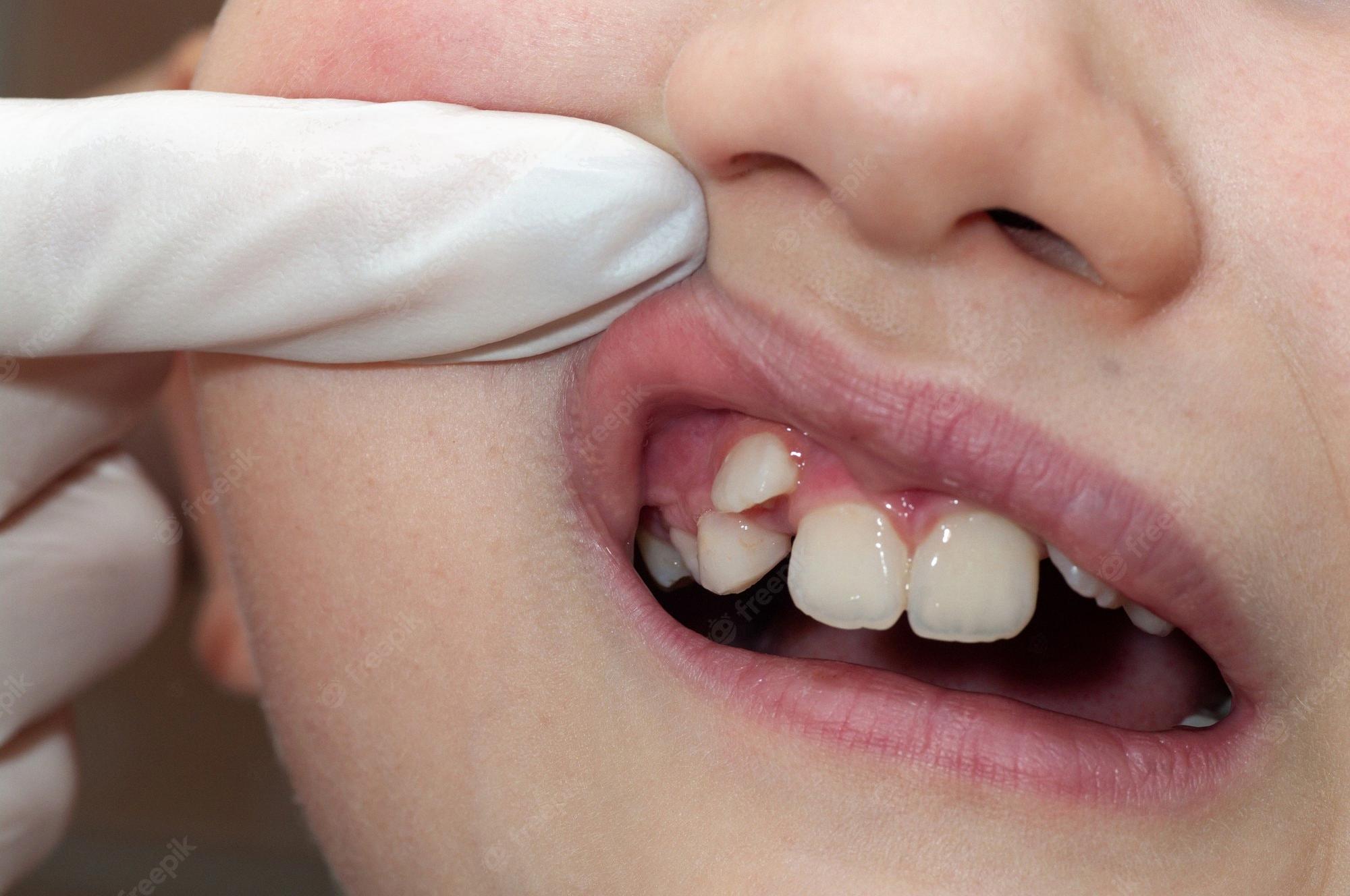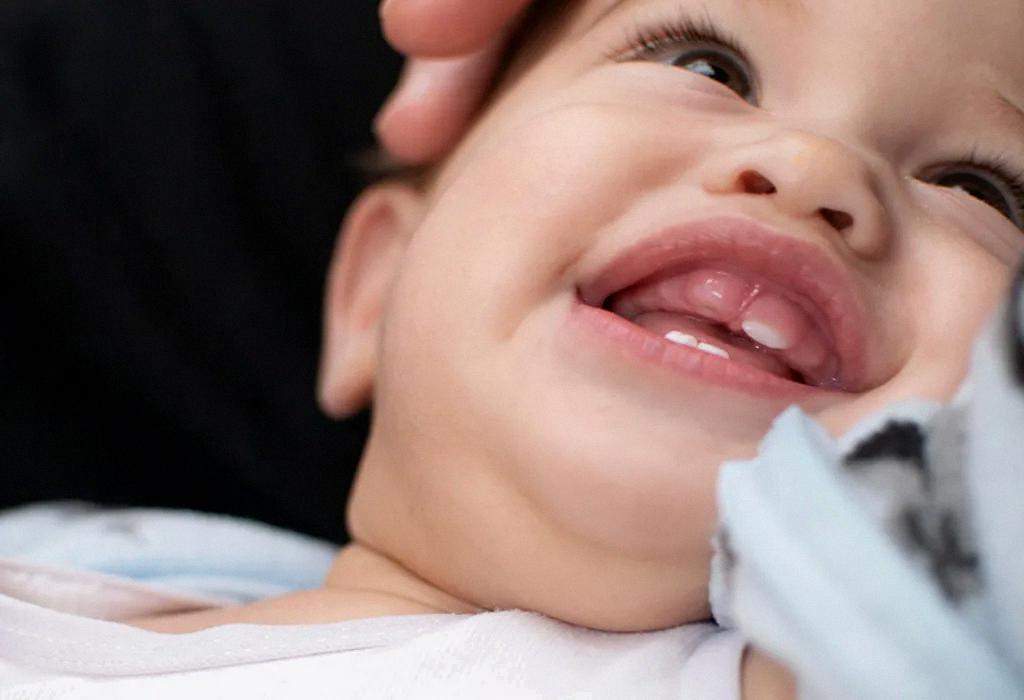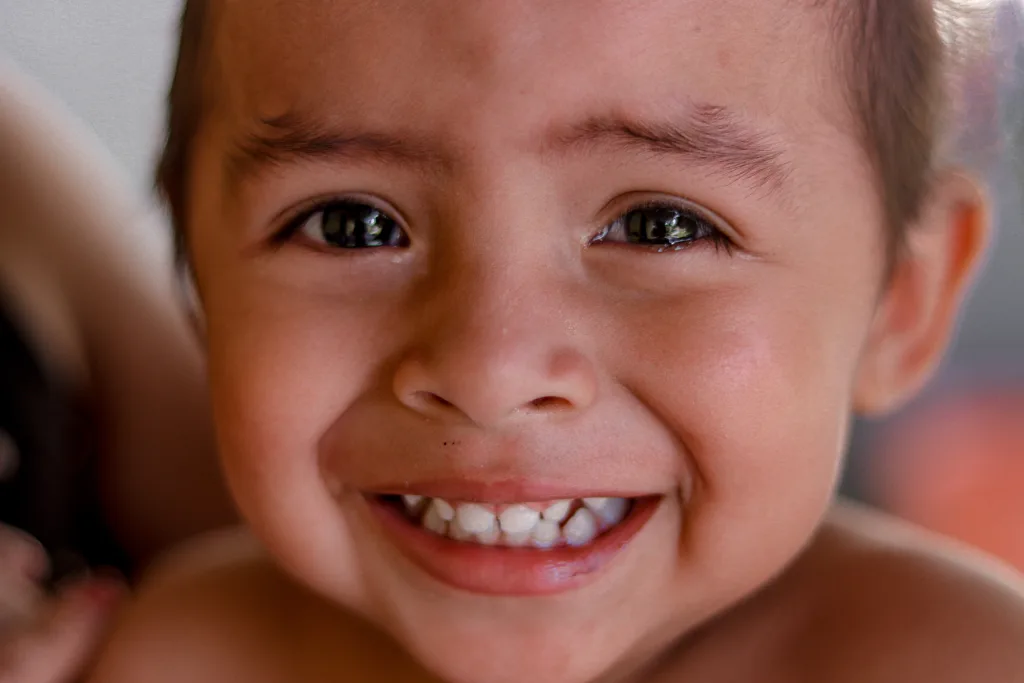Babies can be a bundle of surprises and the arrival of teir teeth is no exception. Many parents are surprised to discover that their baby’s teeth may not come in the same order as expected. It’s important to understand that this is perfectly normal and not something to worry about.
Baby teeth, or primary teeth, are known as deciduous teeth and usually begin erupting at around 6 months old. By age 3, most babies will have all 20 primary teeth. While it’s normal for some baby teeth to come in slightly crooked, it can be concerning if they don’t seem to be coming in the right order.
The typical order of eruption for baby teeth is lower central incisors first (at around 6-10 months), followed by upper central incisors (at around 8-12 months). Then the lateral incisors, first molars, canines and second molars usually follow in that order until all 20 baby teeth have erupted by age 3. However, variations in sequence can occur as well as some children get their maxillary laterals before their maxillary centrals which is considered unusual but not necessarily a cause for alarm.
If you’re concerned abut your baby’s tooth development visit a pediatric dentist who will be able to tell if their tooth eruption is on track or not. They may also recommend treatments such as braces if needed to make sure your child has a gleaming set of 20 healthy and straight adult teeth when they reach adulthood.
Although it can be alarming when your baby’s tooth come out in an unexpected sequence, it doesn’t always mean there’s a problem with their dental health or mouth development. As long as they have all 20 baby teeth by the time they’re three years old there’s no cause for alarm. If you’re stil worried though, talk to a pediatric dentist who will help put your mind at ease.
Can Baby Teeth Come In Out of Place?
Yes, in some cases baby teeth can come in in the wrong place. This is known as ectopic eruption and can occur if there is not enough space for the tooth to grow correctly. When this happens, the tooth may emerge higher or lower than it should, or it may come in sideways. Ectopic eruption can caue issues with proper alignment of the teeth and jaw, so it’s important to speak to a pediatric dentist if you are concerned about your baby’s tooth development. The dentist will be able to diagnose any issues and help determine the best course of action.

Source: freepik.com
Weird Teething Patterns in Babies
It’s actually quite normal for baby teeth to come in slightly crooked. This is because milk teeth are placeholders for a baby’s adult teeth, helping guide them in as they develop and erupt later in life. Since a baby’s jaw and mouth are still growing, the teeth can be crowded or spaced out, giving the appearance of beig crooked or misaligned. This development can still occur perfectly normally even if an infant’s milk teeth aren’t quite straight.
Timing of Eruption of Lateral and Central Incisors
Yes, lateral incisors can come in before central incisors in some cases. Generally, the lower (mandibular) teeth tend to erupt earlier than the upper (maxillary) teeth. The eruption of deciduous teeth begins around 6 months of age and is usually complete by 30 months. However, there can be variations in the sequence of eruption, which may include the eruption of maxillary lateral incisors prior to maxillary central incisors. This is considered an uncommon occurrence but it is possible.
Can Babies Get Top Teeth Before Bottom Teeth?
Yes, babies can get their top teeth before their bottom teeth. This is typically seen in the first few months of a baby’s life when the front upper teeth (incisors) begin to emerge, followed by the lower incisors and then the back molars. In general, this order is considered normal; however, all children’s teeth development is unique, so thre may be variations in the sequence of when each tooth appears. It’s important to keep in mind that some children may be late bloomers, so as long as your child has all 20 baby teeth by age 3 there is no need to worry.
Signs of False Teeth in Babies
False teeth in babies, also known as natal teeth, are teeth that have erupted before the baby is born. They occur in about 1 out of every 2,000 babies. These rare teeth can be located anywhere along the gum line, but most commonly appear near the front of the mouth.
Signs of false teeth in babies typically include:
• Teeth that are visible on a newborn’s gums
• Difficulty with latching or sucking while breastfeeding
• Gums that are tender or sore
• Infant drooling more than normal.
It is important to note that false teeth do not cause diarrhoea, long standing fevers or difficult suckling, which were all symptoms falsely linked with this condition. Therefore, if your baby experiences any of these symptoms it is important to consult a healthcare professional for an accurate diagnosis.

Source: parenting.firstcry.com
Dealing With Shark Teeth in Children
If your child is starting to get shark teeth, it’s important to monitor the stability of the baby tooth. If it is loose, encourage your child to wiggle it until it falls out. If the baby tooth doesn’t come out on its own, you may need to have a dental professional remove it. Be sure to have your child brush their teeth twce a day and floss regularly to prevent bacteria from building up and affecting surrounding teeth. It’s also important to schedule regular check-ups with the dentist so that any potential issues can be identified and addressed in a timely manner.
The Causes of Shark Teeth in Babies
When a child’s baby teeth don’t fall out on schedule, their permanent teeth can start to come in bhind the baby teeth—a phenomenon known as “shark teeth.” Unfortunately, this is relatively common during the teething phase and can cause a double row of teeth. This can be caused by a variety of factors, such as genetics, diet and hygiene, or even misalignment of the jaw. While shark teeth can be alarming for both children and parents, it is important to remember that most cases are easily treated with simple orthodontic procedures such as braces or even surgery to remove the extra teeth.
When Is It Time to Seek Professional Help for My Baby’s Teeth?
If your baby is still not showing any signs of teething by 18 months, it may be time to have them evaluated by a pediatric dentist. It is important to remember that all babies develop at different rates and some may get teeth earlier or later than others.
Some signs that may indicate a need to see a dentist are: no teeth by 18 months, delayed eruption of teeth, persistent gum discoloration or swelling, difficulty nursing or bottle-feeding, excessive drooling or difficulty sleeping due to teething pain. If you notice any of these issues, it is best to contact your pediatric dentist and make an appointment for an evaluation.
The Benefits of Hutchinson Teeth
Hutchinson teeth, also known as Hutchinson incisors, are a type of abnormality in permanent upper central incisors. They are characterized by teir peg-shaped and notched shape, with obvious thinning and discoloration of the enamel in the area of the notching. Typically, Hutchinson teeth are widely spaced and shorter than the lateral incisors. Additionally, the width of the biting surface is usually less than that of the gingival margin. In some cases, these teeth may have severe enough damage to cause discomfort when biting or chewing food.

Source: kidtasticdental.com
Treating Lateral Incisors
Lateral incisors can be treated in a variety of different ways depending on their condition. Composite resin bonding is one of the most common treatments for lateral incisors and involves using a tooth-colored material to add shape and structure to the tooth. Porcelain veneers are anther option, which involve covering the surface of the tooth with a thin layer of porcelain in order to improve its appearance. In more severe cases, crowns may be necessary in order to restore the structural integrity of the tooth. Ultimately, your prosthodontist will be able to determine which treatment is best suited for your particular situation.
Causes of Hypodontia
Hypodontia is a condition that occurs when one or more teeth fail to develop in the mouth. It is estimated that at leat one in every eight hundred people have hypodontia, making it one of the most common congenital anomalies of the human dentition. The exact cause of hypodontia is unknown but there are a few theories as to what might cause it. It has been suggested that genetic factors may play a role, with certain gene mutations causing the formation of fewer teeth than normal. There may also be environmental factors at play, such as early exposure to certain drugs, infections, or trauma during development which can also lead to tooth loss. In some cases, hypodontia may be caused by an imbalance in hormones released during growth and development, or even lifestyle choices such as smoking. Ultimately, further research is needed to determine the underlying cause of this condition.
Difference Between Central and Lateral Incisors
The main difference between central and lateral incisors is their size and shape. Central incisors are larger than lateral incisors, both in permanent and deciduous dentitions. When viewed from the buccal aspect, the central incisors have a straight incisal (cutting) edge, while the lateral incisor’s cutting edge slopes towards the distal side, giving it a shorter distal crown height. Additionally, central incisors can have eiter one or two cusps, while lateral incisors usually only have one cusp.
Timeline for Teething in Babies
It typically takes around 8 days for a tooth to break through the gums. This period usually starts 4 days beore the tooth appears and lasts 3 days afterwards. Most people will notice a blue-grey bubble on the gum indicating where the tooth is about to emerge, known as an eruption cyst. This cyst will usually disappear without treatment.

The Meaning of an Epstein Pearl
An Epstein pearl is a type of cyst that occurs in newborn babies. It is a small, whitish-yellow bump that appears on the gums and roof of the mouth. These cysts form when keratin, a protein found in skin, gets trapped under the surface of the baby’s skin. They usually disappear on their own within a few weeks, but can sometimes remain for several months. Unlike other types of skin problems in babies such as milia, Epstein pearls are not painful or harmful and do not require any additional treatment.
Number of Teeth in a 10 Month Old Baby
At 10 months old, most babies will have two teeth. This is usually the lower central incisors, whih are the two front teeth in the bottom jaw. Some babies may have up to four teeth by this age, but this is not as common. As your baby continues to grow, more teeth will come in and you can expect to see four teeth by 11 months old on average.
Conclusion
In conclusion, it is normal for baby teeth to come in slightly crooked and there is no need to worry if the exact order of tooth eruption is not followed. It is important to talk to a pediatric dentist if you are concerned about your baby’s tooth development. Generally, mandibular teeth erupt before maxillary teeth, but variations in the sequence of eruption can occur. All babies will have a set of 20 teeth by their third birthday, regardless of the order in which they came in. Taking care of a baby’s emerging teeth is essential for cavity prevention and proper alignment lter on in life.
